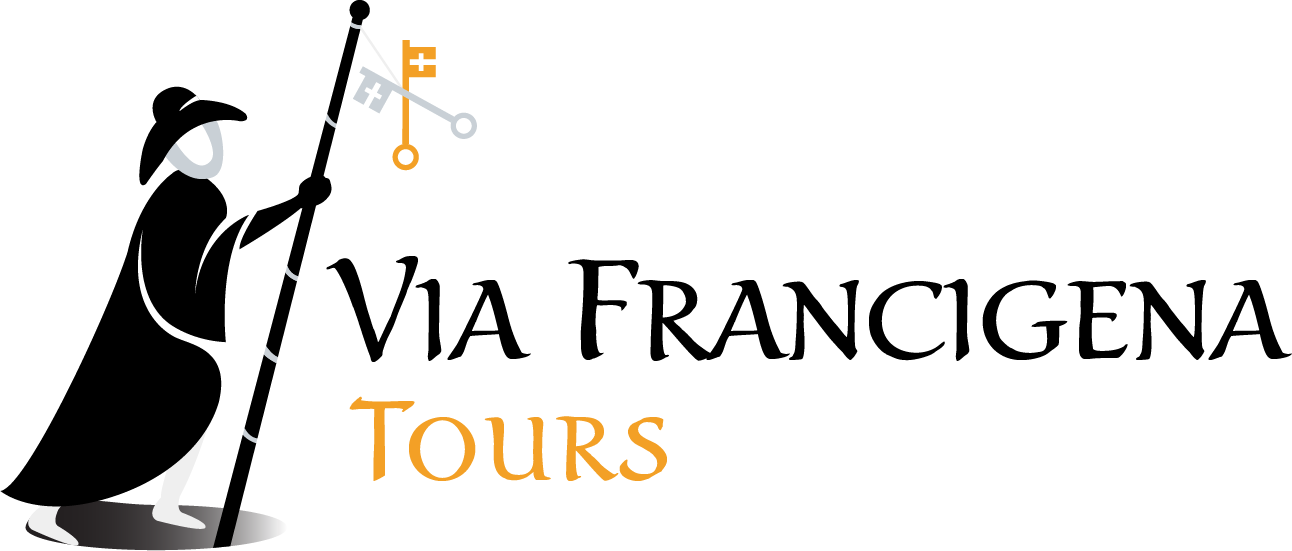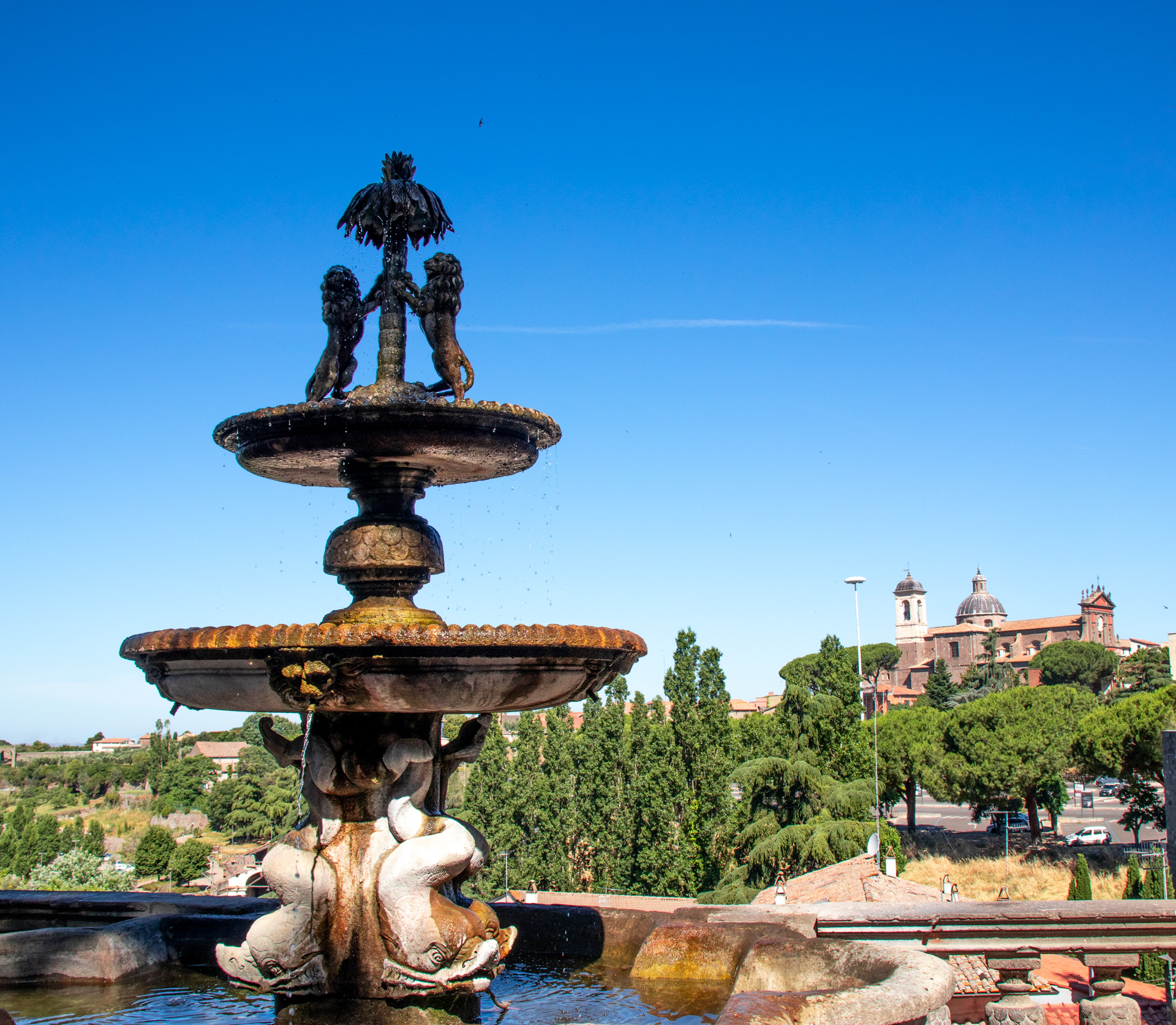Viterbo is an exciting Via Francigena destination! It is quite a large city with heaps to see! Viterbo earned its name as the ‘City of the Popes’! So visit Viterbo to find out how it earned this name! Start with a walk through Christian history visiting its many Cathedrals and churches. At the same time, explore its massive city walls and medieval streets abounding with decorative fountains. And don’t miss out on the Via Francigena pilgrim medieval quarter and the Palace of the Popes. But most important is to savour the food and wine of the region!
History and Culture
Medieval
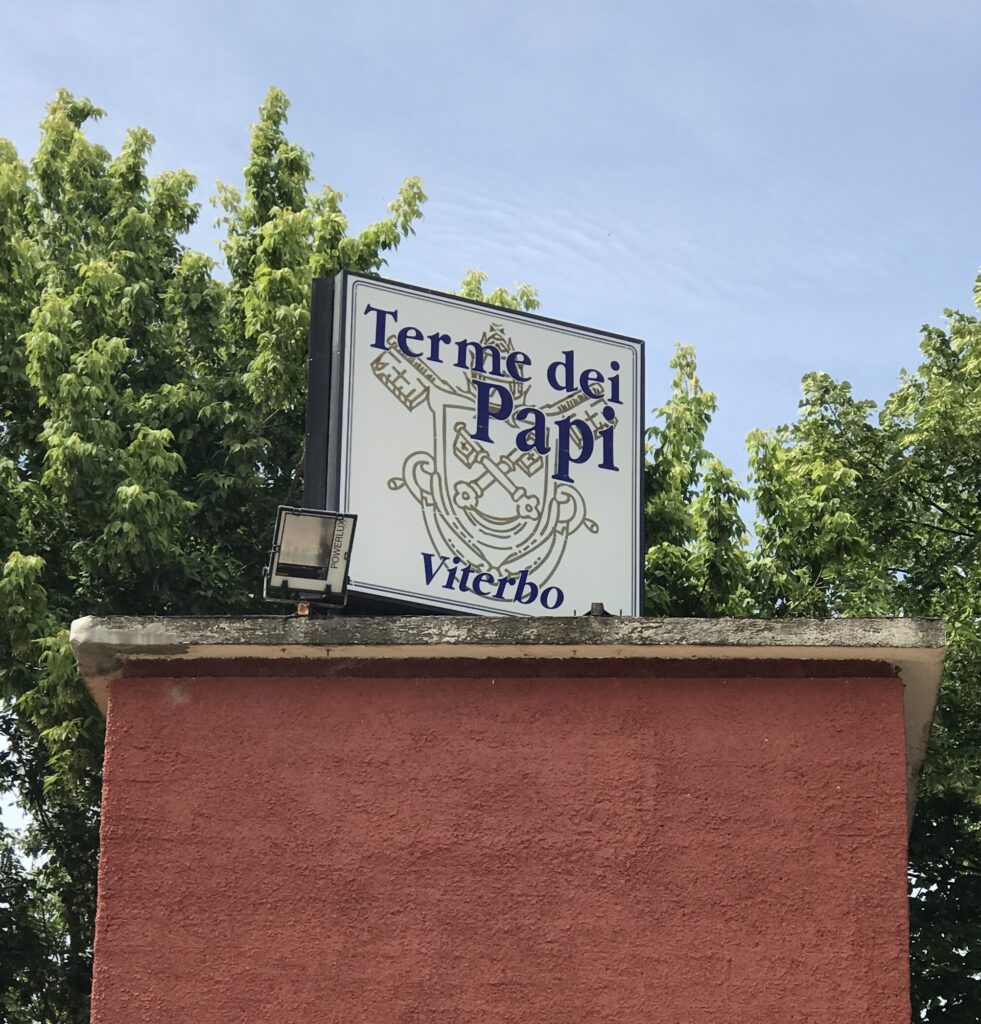
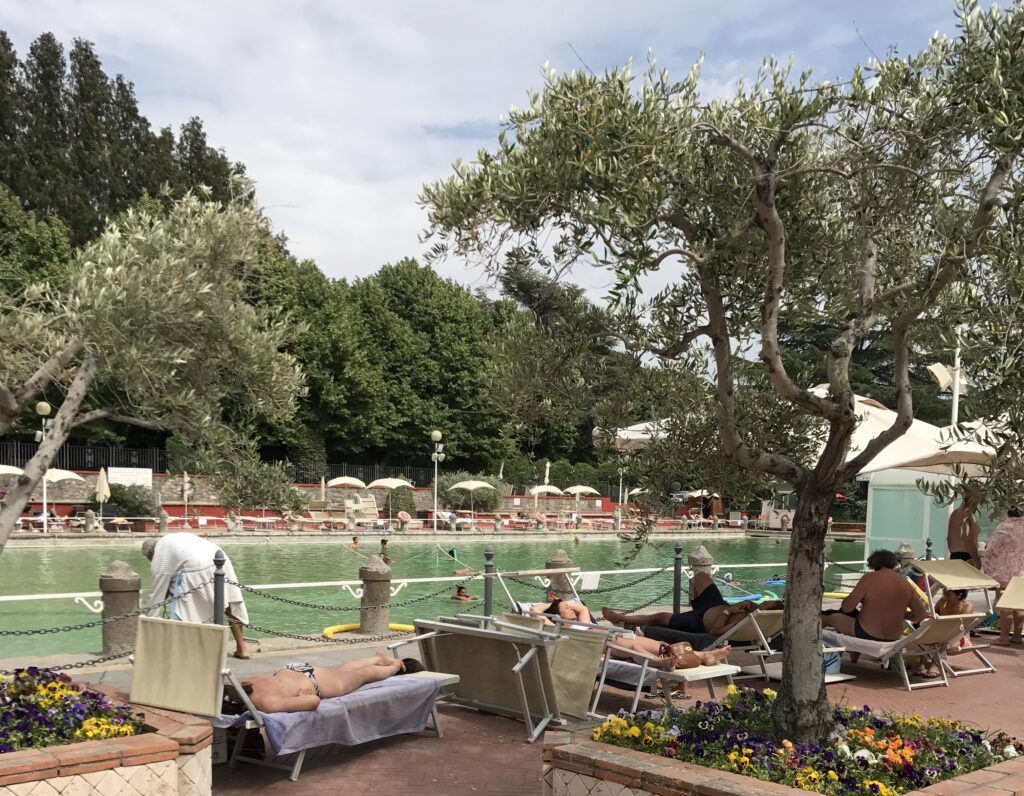

In medieval times Viterbo was an important Via Francigena pilgrim destination. In 990 CE Archbishop Sigeric noted in his diary that it was the 6th place where he stayed. ‘Sce Valentine’ was its name then. ‘Borgo San Valentino’ had a hospital and shelter for pilgrims. Most likely, Bullicame, near Viterbo was the exact location. This area is famous for its thermal springs. Dante Alghieri in the Diving Comedy made these springs famous. It refers to a stream which comes out of the Bullicame (Inferno, canto XIV, v.79). So, no doubt it was a refreshing place for a stopover for Via Francigena pilgrims. The Popes certainly enjoyed the thermal baths! So, don’t miss out on the Terme dei Papi thermal baths near Bullicame!
Etruscan
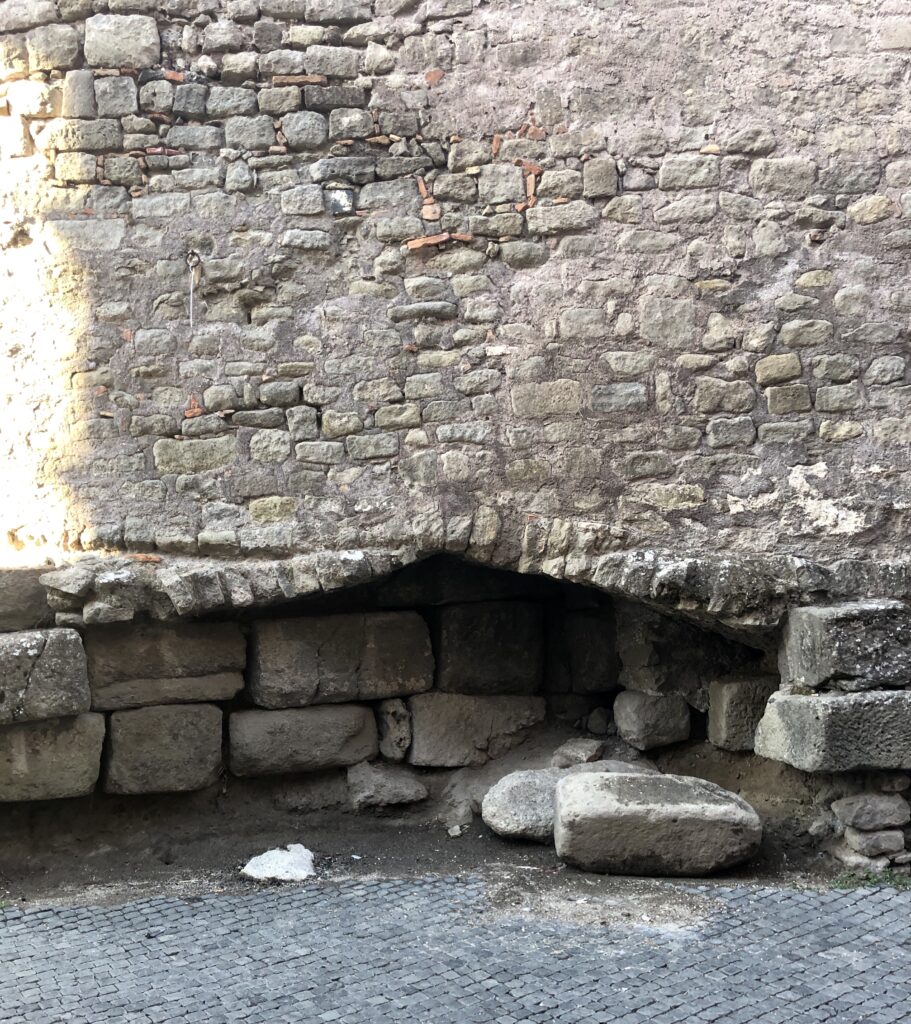
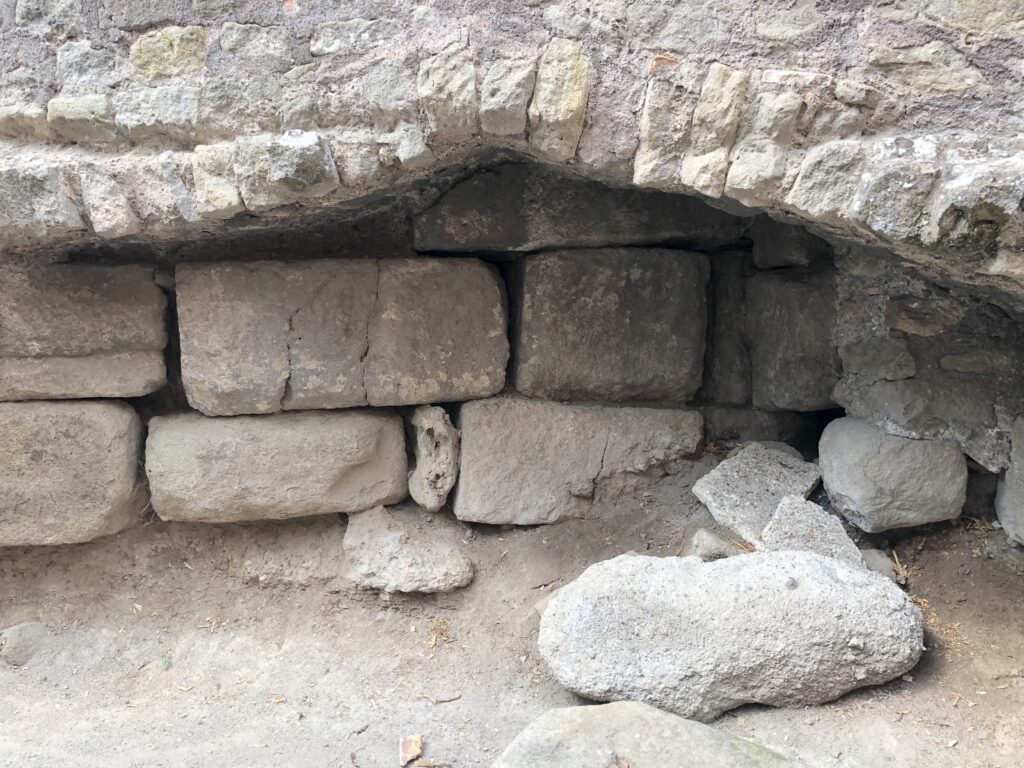
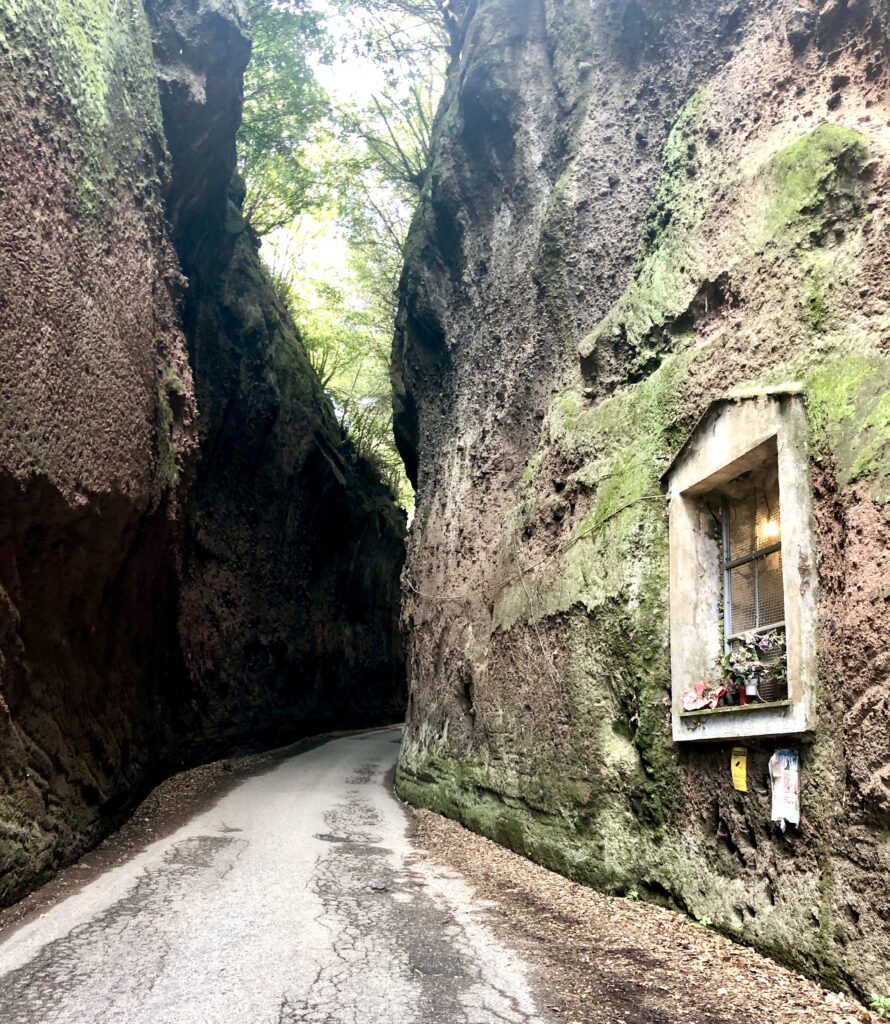
Viterbo’s origins go right back to the Etruscans. Their civilization flourished in central Italy between the 8th and 3rd centuries BCE. Tuscany derives its name from the Etruscans. This is because they were fond of building their cities on ‘Tusci’ or hilltops. The highest point in Viterbo is Cathedral Hill near the Piazza San Lorenzo. This is where archaeologists have unearthed large rectangular stone blocks, foundation stones of Etruscan buildings. This hill provided a safety because it could easily be defended from the valley below. Surna or Surrena or Sorrina might have been the name of the Etruscan town. However, little evidence remains to establish this. But, excavations beneath San Lorenzo Cathedral will bring more to light.
Visit the Etruscan Museum near Porta Fiorentino. Also, stop to see the excavated stone blocks on the way to Piazza San Lorenzo. And outside Porta di Valle take a walk along Strada Signorino to see the high tufa walls excavated by the Etruscans.
Romans
After the Romans defeated the Etruscans the city obtained a new name. A likely explanation is that its name came from the Latin phrase Vetus Urbs, meaning ‘Old town’.
City of the Popes
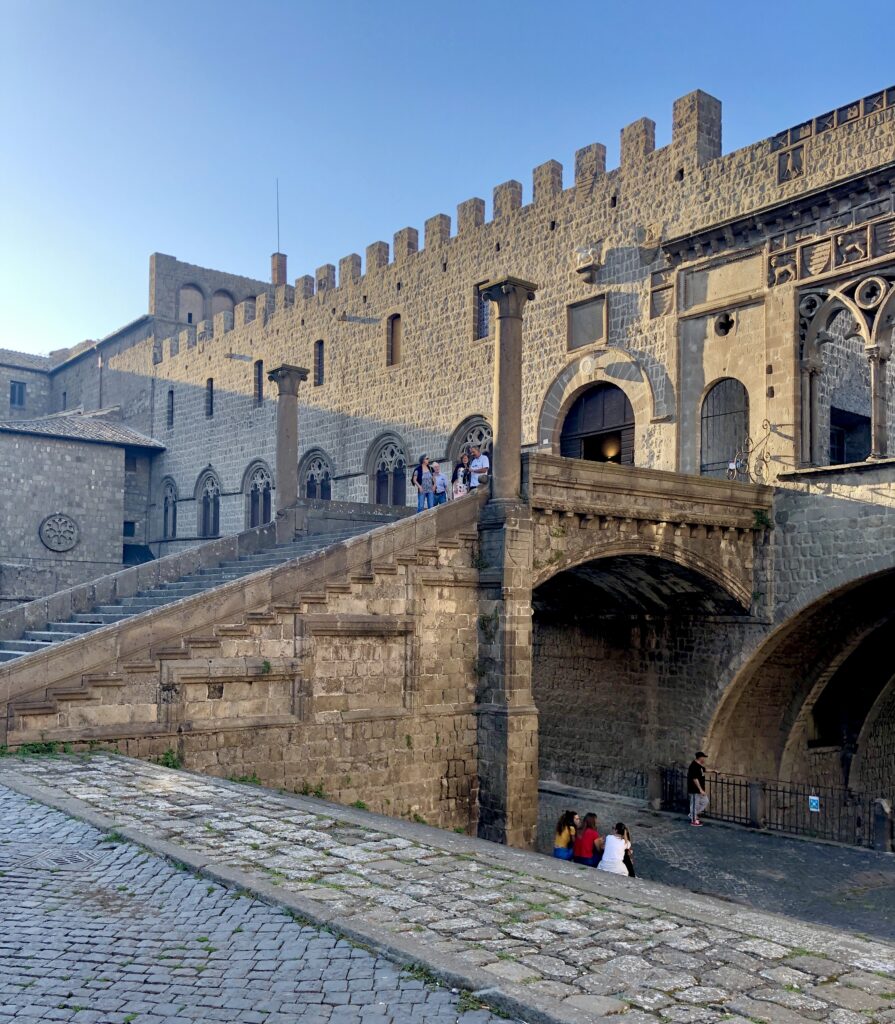


In the 13th century there was a struggle between the Papacy and the Empire for power. However, Rome was not a safe city for Popes. So, from 1257 until 1281 the Popes lived in the Palazzo dei Papi in Viterbo. Today, a focus of the Piazza San Lorenzo is the Papal Palace (Palazzo dei Papi) and its Loggia. In fact, Viterbo had the first conclave to elect a new Pope. The Cardinals took so long to elect a new Pope they were locked up until a decision was made. Today, this tradition continues.
What to See
Church of San Francesco

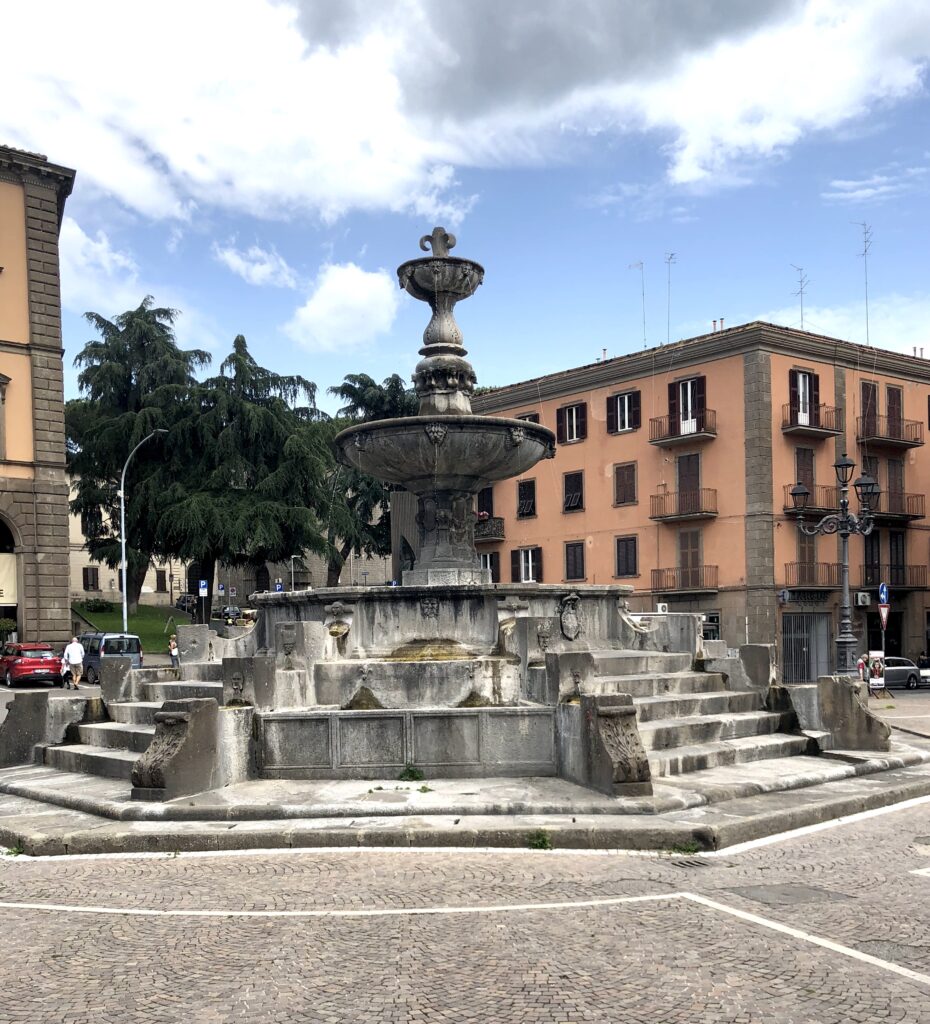
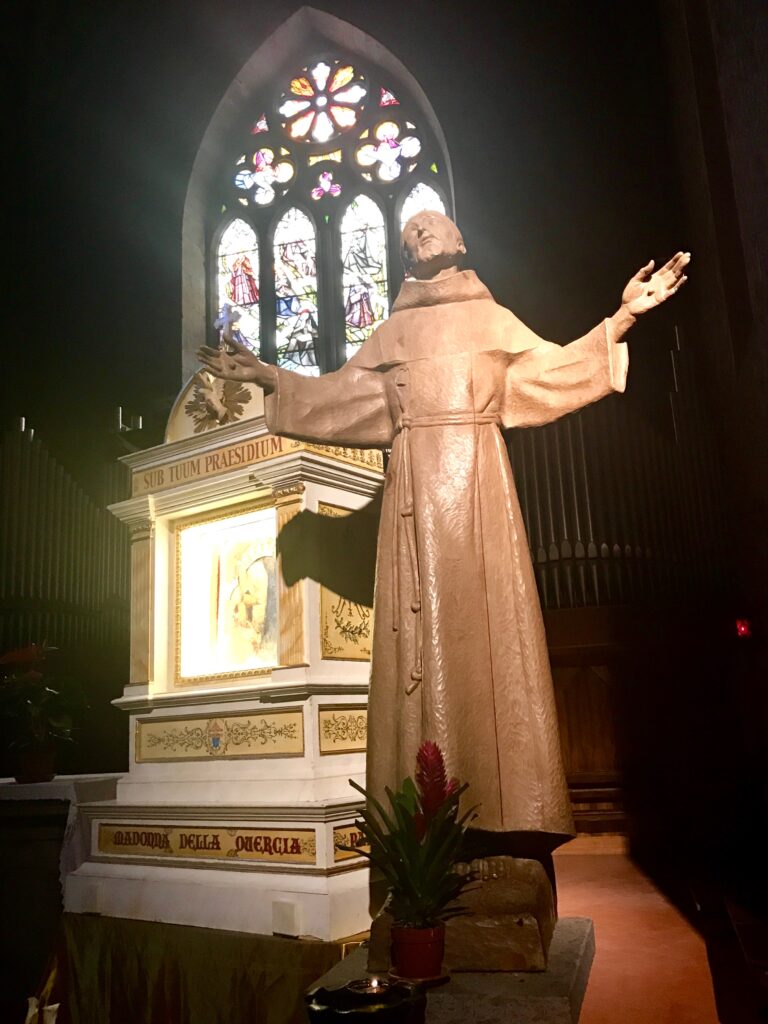
At the end of the Via Francigena walk from Montefiascone enter Viterbo through Porta Fiorentina. Take a rest at the fountain and then turn left to visit the Church of San Francesco. In 1237 worked commenced on the church. However, it has undergone many restorations due to war time bombings. The carved image of San Francesco is a highlight! Also, a Via Francigena pilgrim stamp is available in the sacristy.
Sanctuary of Santa Rosa

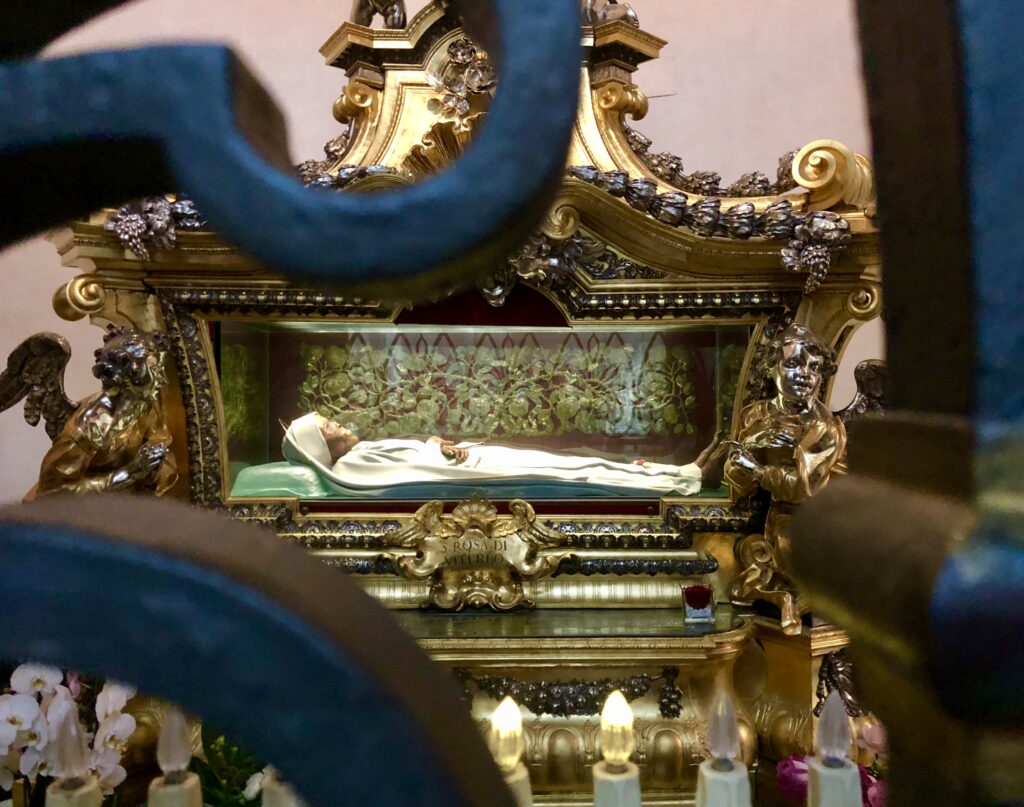
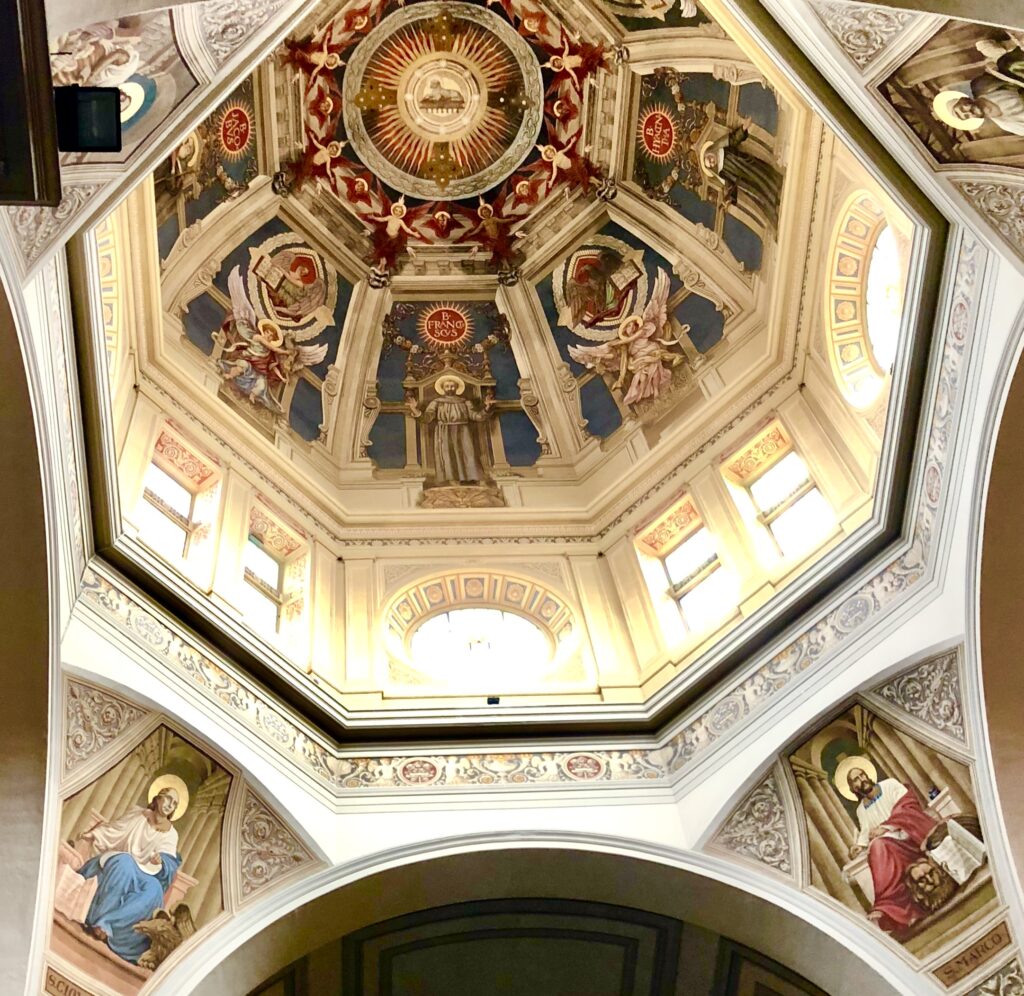
Return to the fountain and continue straight ahead to the Church of Santa Rosa. Santa Rosa is the patron saint of Viterbo. Santa Maria delle Fortezze was the original 13th century church. Then, in the 16th century a new church was built annexed to the nearby Clarisse monastery. The nuns lovingly care for the church and the shrine of the saint. They also welcome Via Francigena pilgrims to Viterbo with a pilgrim stamp. On the saint’s feast day, 3rd September there is the famous ‘Macchina di Santa Rosa’ procession. 100 men carry a mammoth 30 m high illuminated canopy 30 m through the streets. There are many beautiful works of art in the church. Follow the link to read more about the Sanctuary.
Church of Santa Maria del Suffraggio
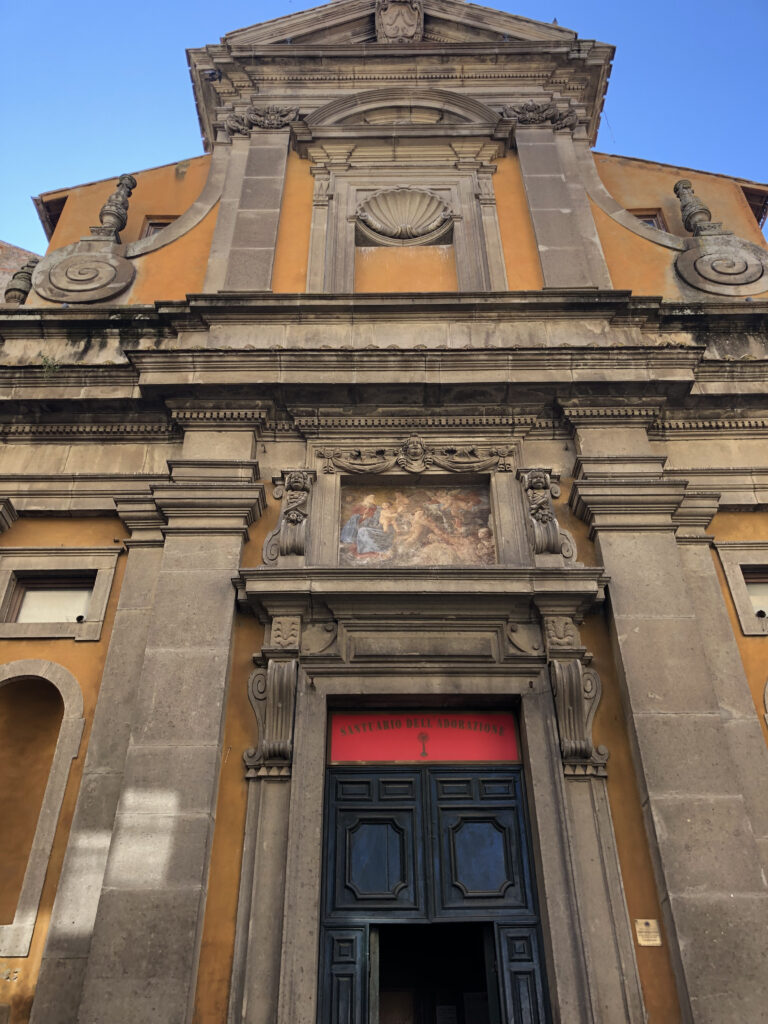

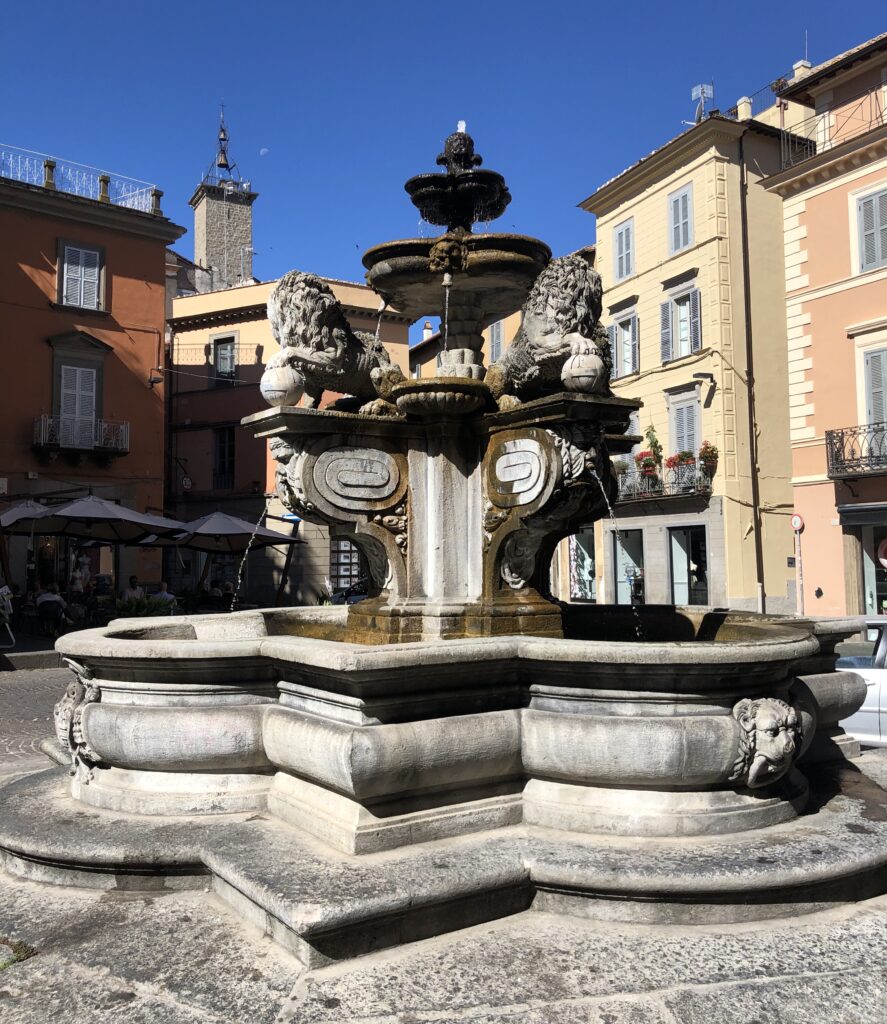
Leave Santa Rosa and continue along Corsa Italia towards the Piazza del Plebiscito. On the way stop and visit the Church of Santa Maria del Suggragio. The façade of the church is decorated in a colourful Baroque style. Inside there is one nave with many Baroque features. Follow the link for photos and details of the furnishings, paintings and frescoes.
Piazza del Plebiscito
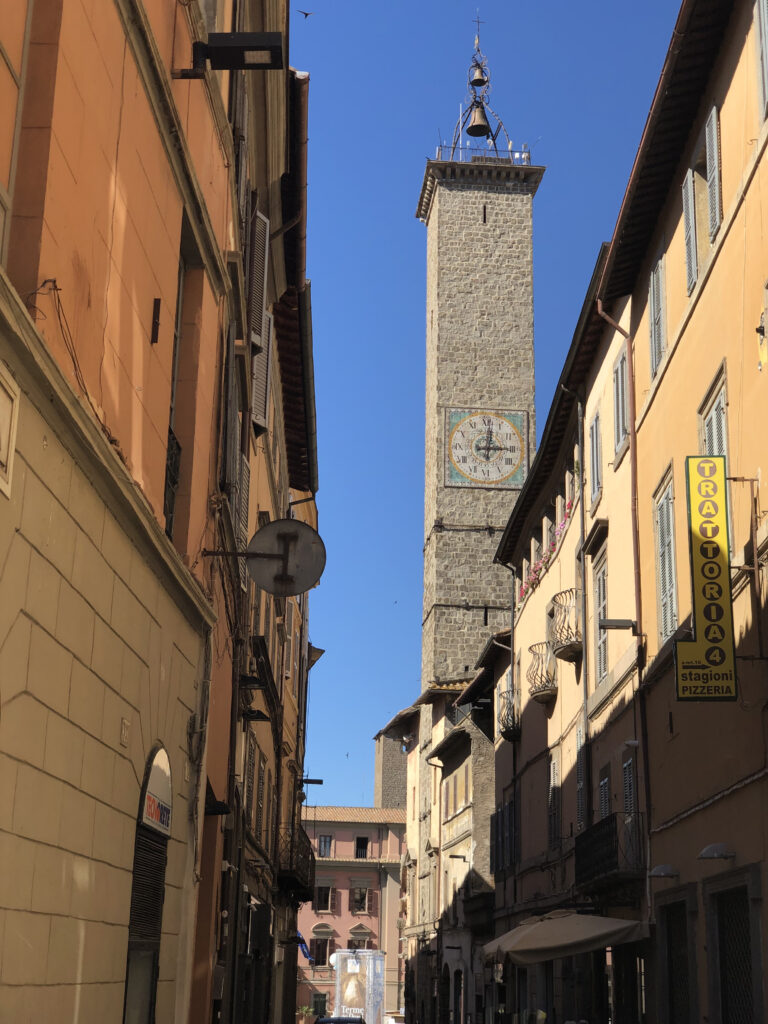

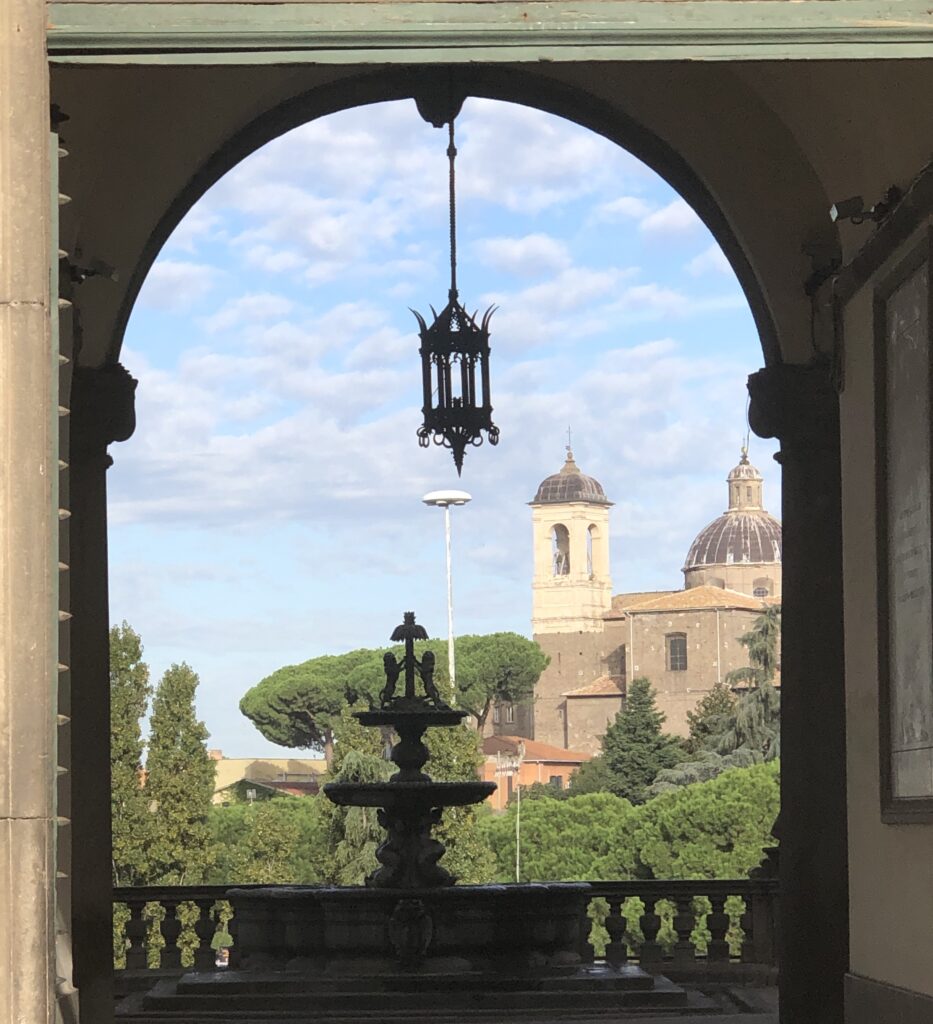
Continue along Via Roma to the Piazza del Plebiscito which is the central meeting place in Viterbo. The city Hall which was once the seat of government dominates the Piazza. Also, there is a majestic bell tower with clock and the lion which appears on the coat of arms. Then, cross the square to the Palazzo dei Priori and walk through the building to admire the fountain of the Pallazo dei Priori. Here there are beautiful views over Viterbo and ancient sculptures from the a nearby museum (Museo dei Portici).
Piazza del Gesù
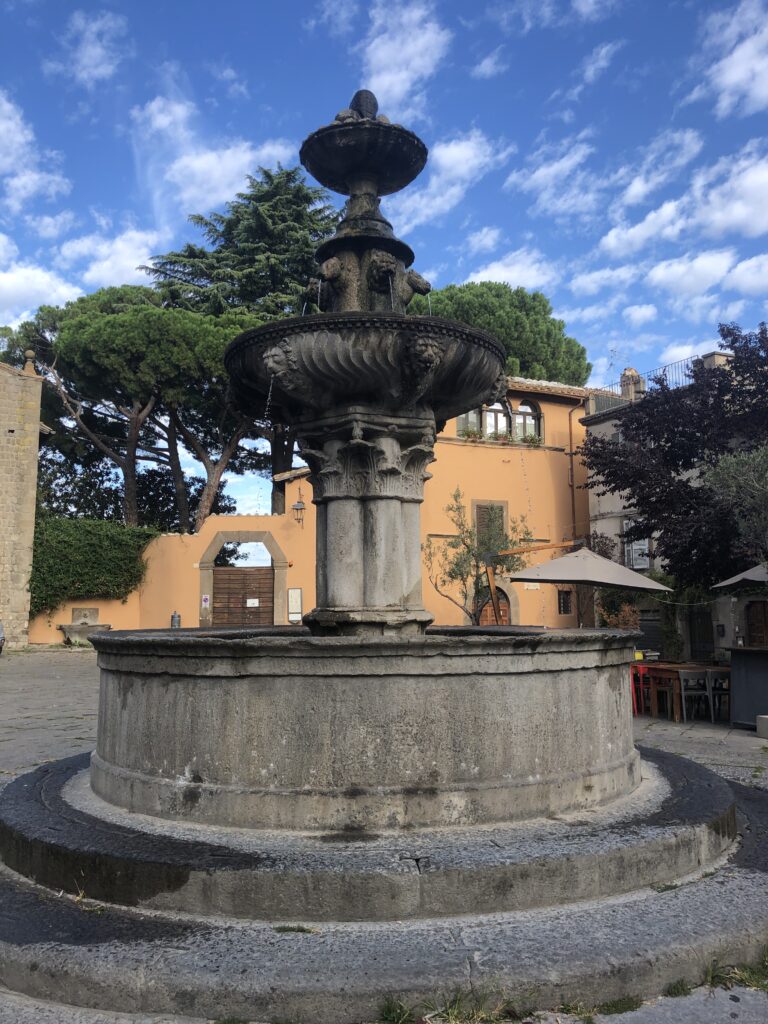
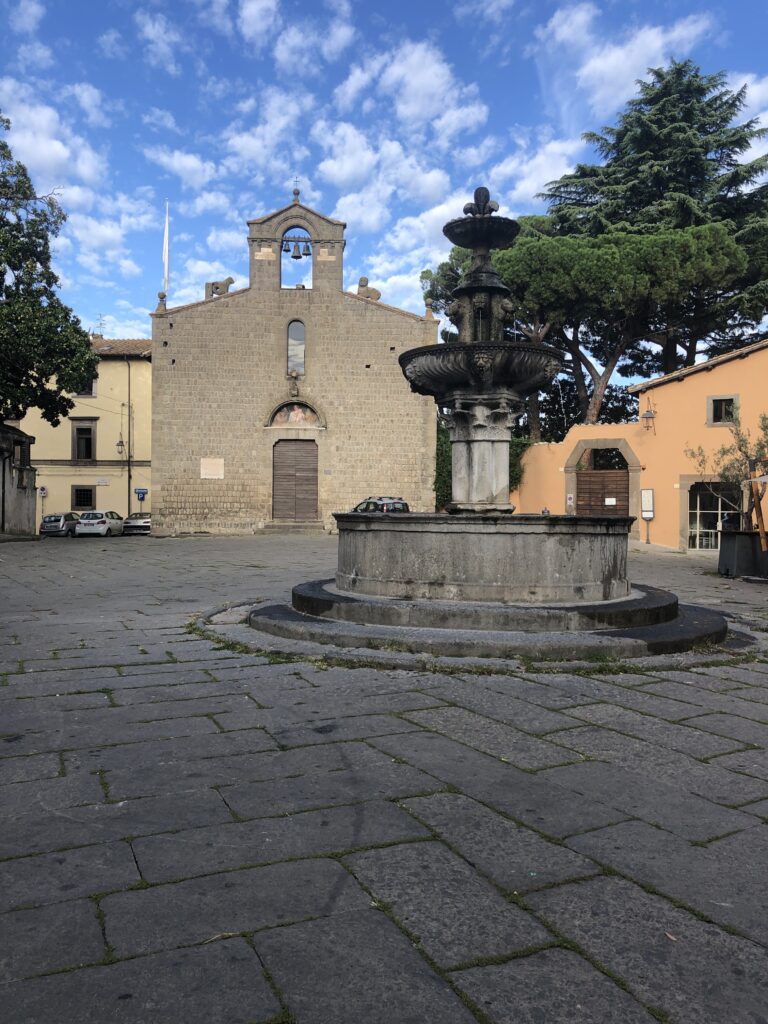
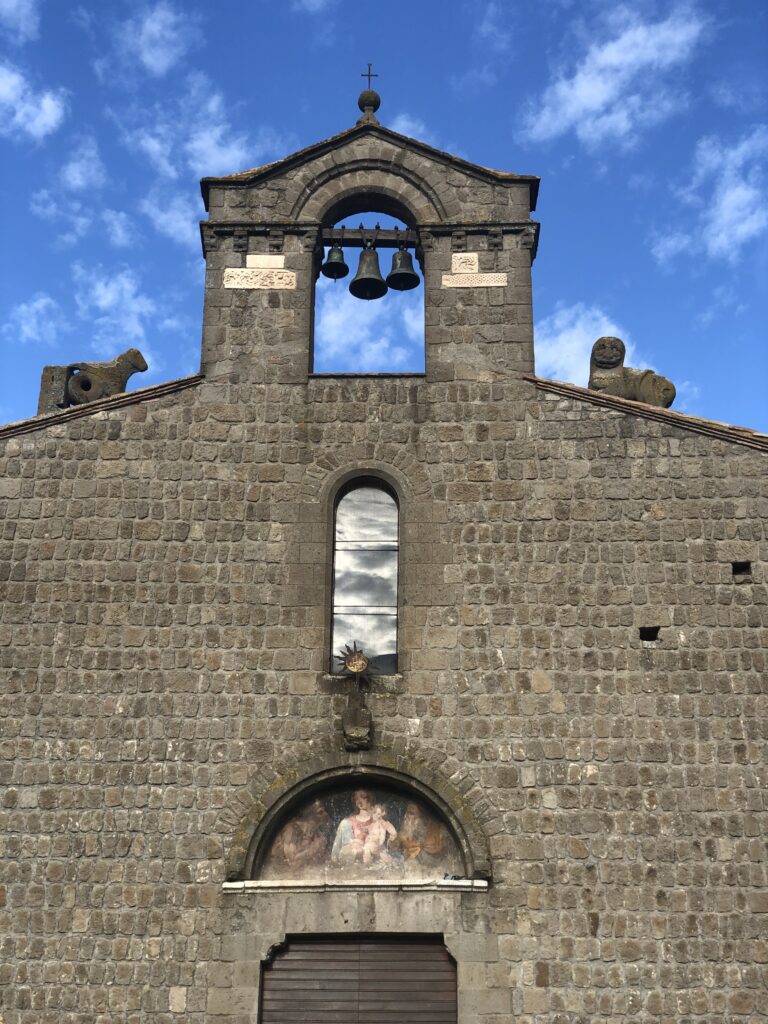
Leave the Piazza del Plebiscito turning right into Via San Lorenzo which leads to the Piazza del Gesù . In 1080 this Piazza was the old Market Square and was the centre of town life for many years. The Fountain of Jesus dominated the Piazza. A pillar emerges from one base and it has lions’ heads and domestic animals in the upper section. At the far end of the Piazza is the small Church of San Silvestro, also known as the Church of Jesus. The church still retains many Romanesque features with its bell-shaped façade, two lancet windows, an oculus above the marble frieze in a lunette and bell gable and marble frieze. Inside the church are remarkable frescoes, crucifixes, artefacts and inscriptions. Follow the link to see the pictures.
Palazzo Farnese

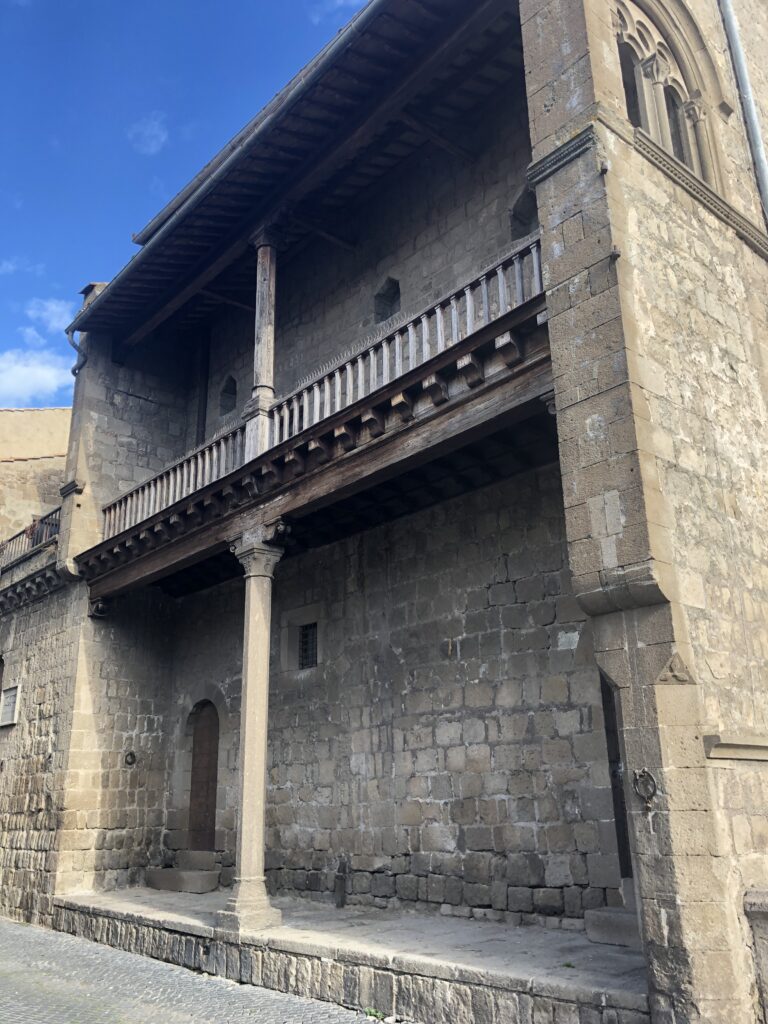
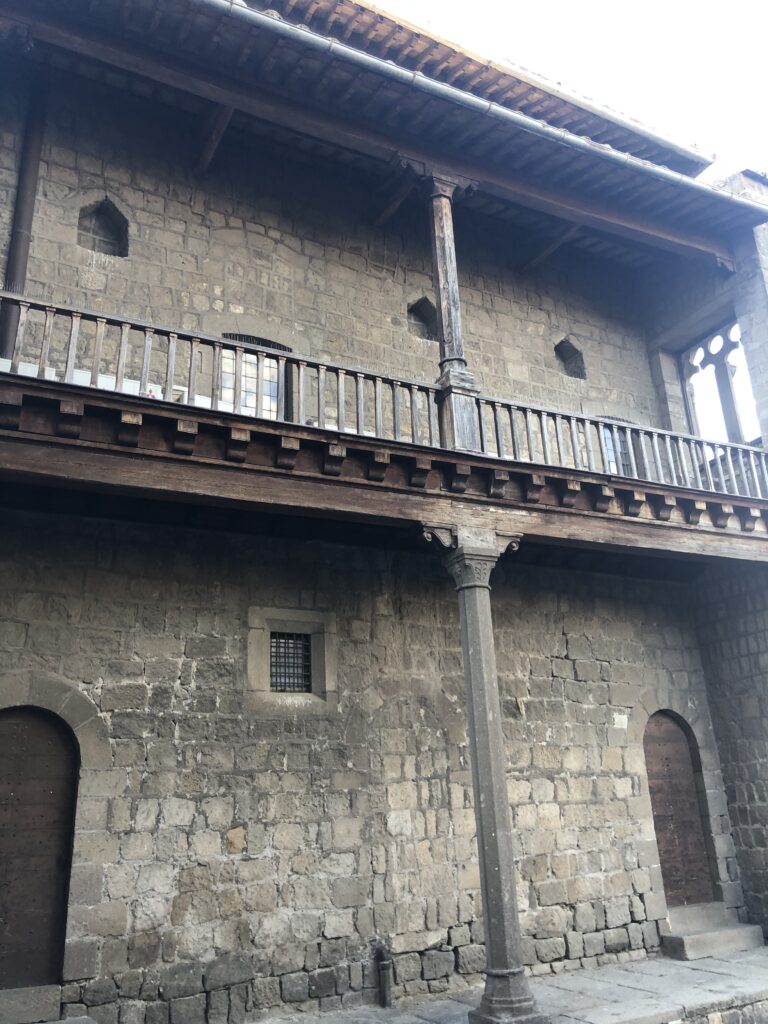
Follow Via San Lorenzo to the Piazza del San Lorenzo. Just before the Piazza is the ruins of Palazzo Farnese. In 1278 the building was once a hospital. But in 1431 it became the property of the Farnese family. In time it was referred to as the ‘House of Cardinal Farnese’. This is because it was home to Cardinal Alexander Farnese before he became Pope Paul III (1534-1549). The building has some interesting features with a mix of Romanesque, Gothic and Renaissance influences.
Piazza San Lorenzo
Continue past Palazzo Farnese to the Piazza San Lorenzo. Stop and observe the excavated Etruscan stone blocks just past the Palazzo Farnese. Then enter the Piazza and visit the Palazzetto di Valentino, the Cathedral of San Lorenzo and the Palazzo dei Papi. After visiting the Palazzo dei Papi walk beneath the Loggia, down the stairs and turn left. This path leads to Porta di Valle and Via Signorina with its high walls excavated by the Etruscans.
Cathedral of San Lorenzo
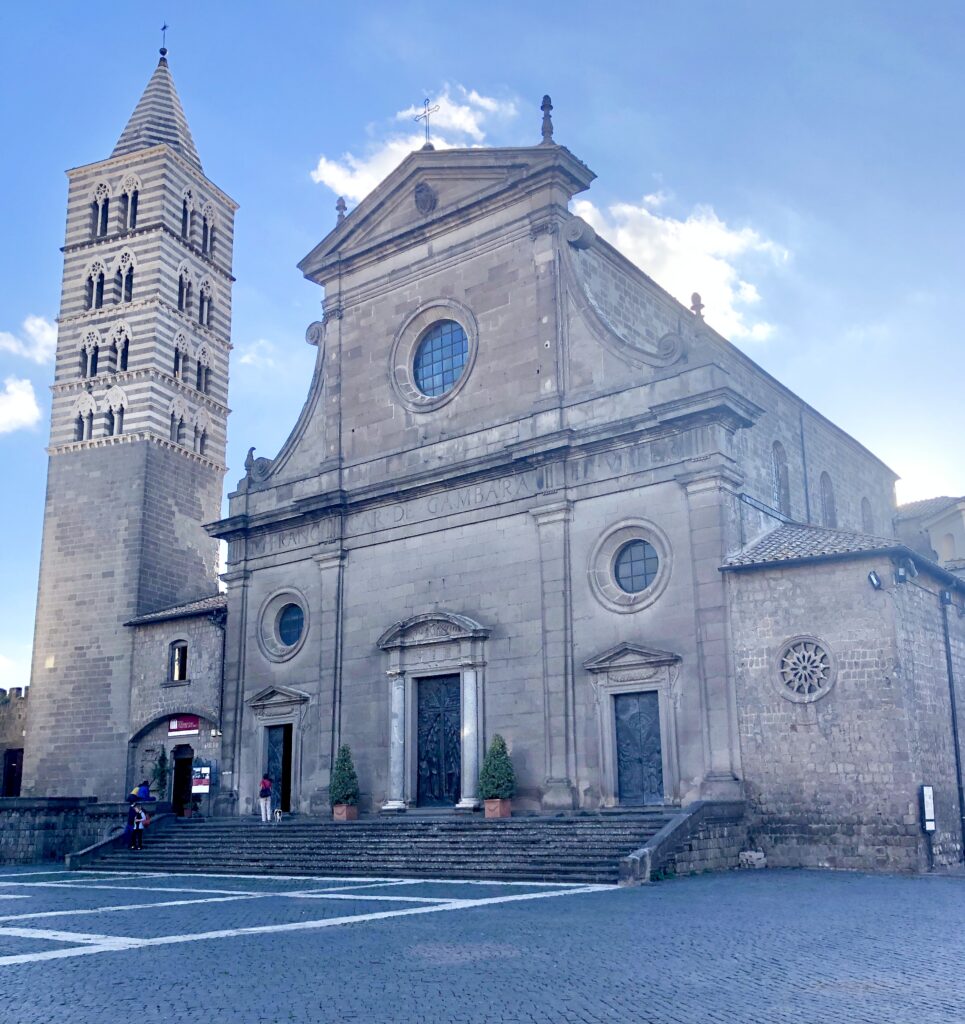


The Cathedral of San Lorenzo is in pride of place on Cathedral Hill in the Piazza of San Lorenzo. There is evidence that it was built on the site of an ancient pagan temple dedicated to Hercules. Today the lion in the city’s crest is a reminder of these origins. In 805 there was a simple parish church dedicated to San Lorenzo. Over the years the church was gradually modified. Today the Cathedral has a Renaissance-style façade. The interior has three naves and cosmatesque-style flooring and many works of art. Follow the link to discover the amazing interior of this Cathedral.
Church of Santa Maria della Carbonara
The church of Santa Maria della Carbonara is located on Via Sant’Antonio near Piazza San Lorenzo. It dates back to the 12th century, but over the years has lost many of its decorative features. In the Middle Ages it was the seat of the templars. It was famous for its Byzantine painting of the Madonna della Carbonara. Today the original is in the Museo del Colle del Duomo. Follow the link to find out more about its very colourful past.
Via Francigena Medieval Quarter in Viterbo

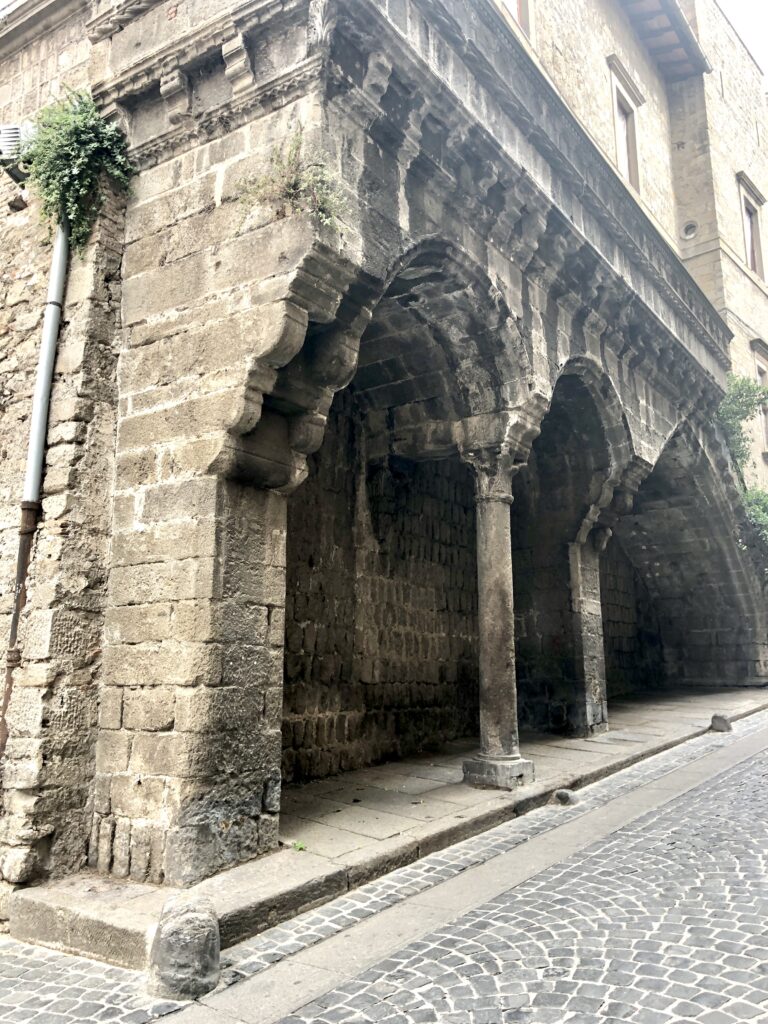
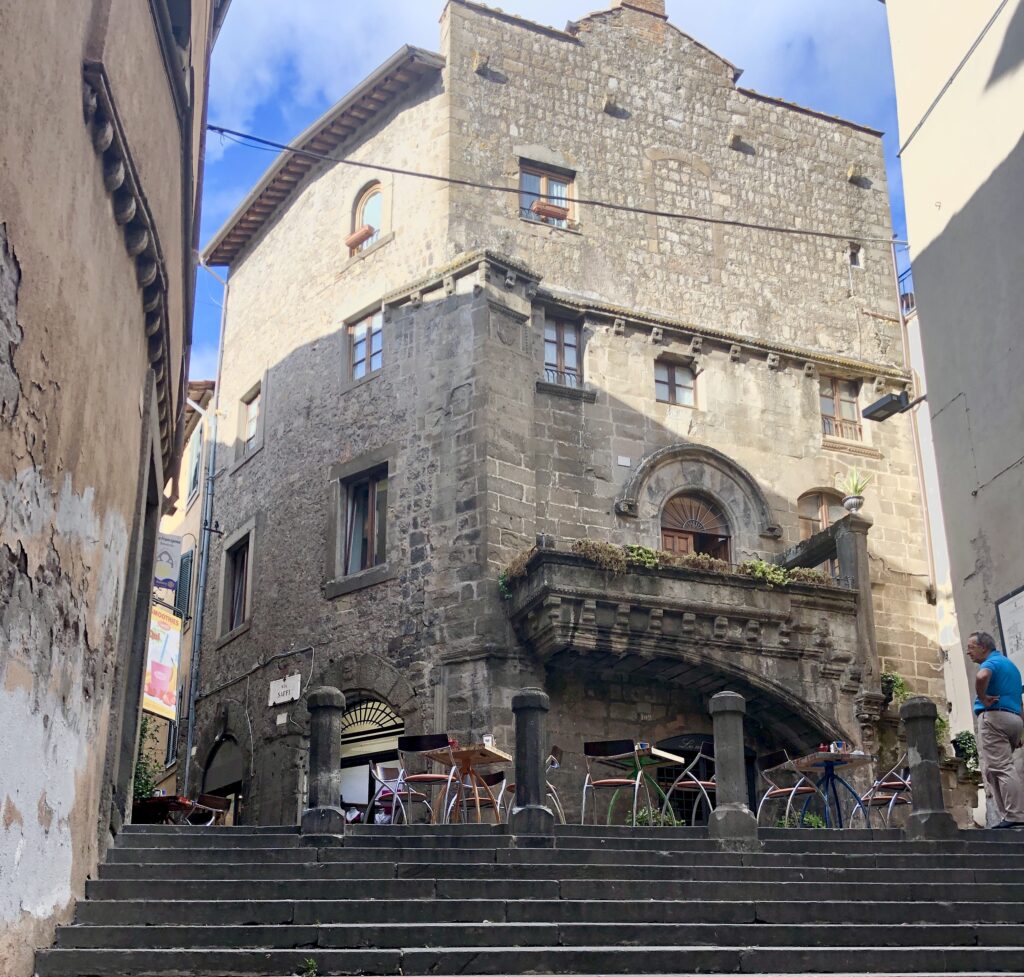
The Medieval Quarter of Viterbo is a tribute the days of Via Francigena pilgrimage. There are many ancient buildings. But, the Church of San Pellegrino is one of the oldest monuments still preserved in Viterbo. Today, an arch supported by half-pillars frames the entire façade. The interior has a nave and ceiling trusses with traces of frescoes from 400 to 700 CE. And it has an amazing altarpiece. Follow the link to find out more about this ancient church.
Church of Santa Maria Nuovo
The Church of Santa Maria Nuovo is one of the oldest oldest churches in Viterbo and built on remains of a Roman temple dedicated to Jupiter Cimino. This remarkable church dates back to the 11th century. It has an ancient, simple Romanesque exterior and the interior has many artefacts and frescoes. Follow the link to discover more about its remarkable history and features of its interior.
Church of San Sisto
The Church of San Sisto is located near Porta Romana. It was first mentioned around 1068 and was built on the ruins of a previous shrine. It was in the village of Vico Quinzano in the area Porta Romana. Follow the link to read about the history and see pictures of the interior. There is a remarkable altar-piece of the Madonna enthroned with Child among the Saints Lawrence, Felicissima, Sisto, John the Baptist, Nicholas and Gregory by the Florentine Maestro Neri di Bicci.
Church of San Giovanni in Zoccoli
The Church of San Giovanni in Zoccoli is located near Porta Romana. It has an amazing façade with two flying buttresses leaning against the façade of the building opposite. It takes its name from the porcelain bowls (cicole’ in Italian dialect) that adorned the façade. Follow the link to read more about this amazing Church.
Via Francigena Food and Wine in Viterbo
The province of Viterbo is known for its food and wine! And there are numerous livestock farms, wineries, olive groves and bee keepers along the way. Also, the Cimini hills are noted for their hazelnuts which are used to make Tozzetti di Viterbo and Sant’Antonio biscuits. Both are dipped in the local Vin Santo wine. Honey of the region is the main ingredient in these two desserts. Ciliegine disadratate dried cherries, Barette di frutta secca dried fruit bars make a healthy snack whilst walking. Then there is my favourite cheese Pecorino Romano. There is also Caprino nobile cheese, which is a very tasty goat cheese with a think layer of mould. Susianella viterbese is a slow cooked sausage dish that originated from an Etruscan recipe and was popular in Via Francigena pilgrimage days. Make sure you sample the EST EST EST wine which originated in Montefiascone.
